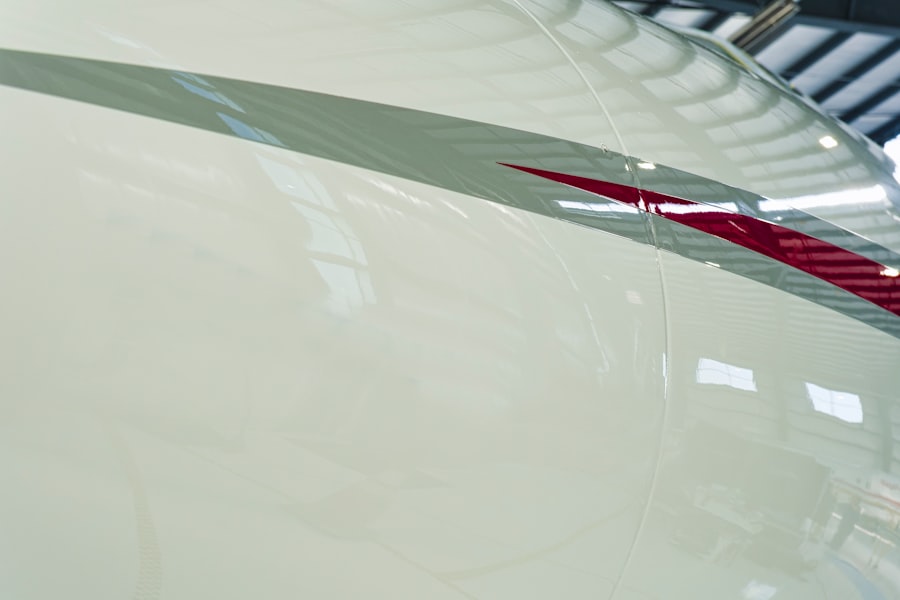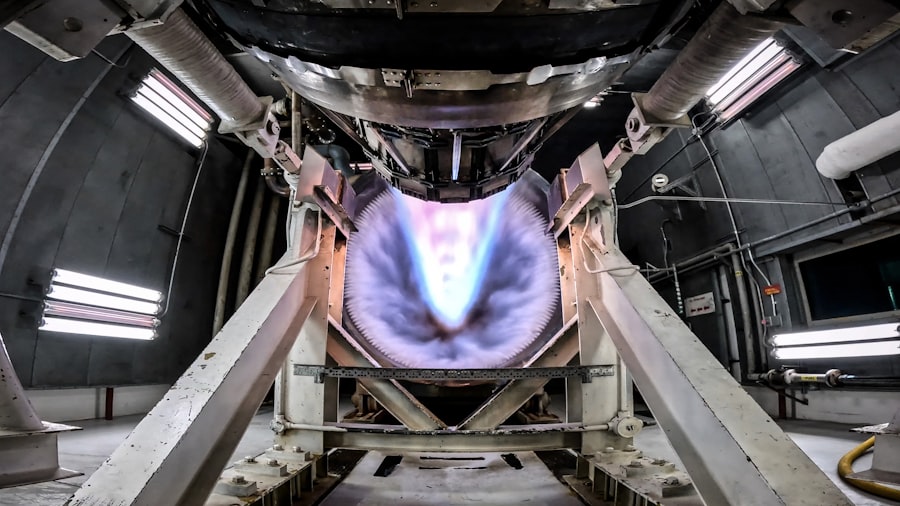Aerospace technology encompasses a broad spectrum of innovations and engineering practices that facilitate the design, development, and operation of aircraft and spacecraft. This field is not merely confined to the creation of vehicles that traverse the skies or the vacuum of space; it also includes the intricate systems that support these vehicles, such as navigation, communication, and control systems. The aerospace sector has evolved significantly since the Wright brothers’ first powered flight in 1903, transitioning from rudimentary designs to sophisticated machines capable of reaching the edge of space and beyond.
Today, aerospace technology is a critical component of global transportation, defense, and exploration, influencing various aspects of modern life. The significance of aerospace technology extends beyond its immediate applications. It plays a pivotal role in economic development, national security, and scientific advancement.
The industry is a major employer worldwide, providing millions of jobs in engineering, manufacturing, and research. Furthermore, aerospace technology drives innovation in other sectors, including telecommunications, materials science, and environmental sustainability. As we delve deeper into the current landscape of aerospace tech, it becomes evident that while the industry has made remarkable strides, it faces a myriad of challenges that must be addressed to ensure its continued growth and relevance.
Key Takeaways
- Aerospace technology is rapidly evolving to address current industry challenges and sustainability goals.
- Emerging technologies like electric propulsion are driving the shift toward greener, more efficient aviation.
- Innovations in materials and manufacturing are enhancing aircraft performance and reducing costs.
- Autonomous and unmanned aircraft are transforming both commercial and defense aerospace sectors.
- Space exploration and commercial space travel present new opportunities alongside significant technical and regulatory challenges.
Current Challenges in Aerospace Tech
The aerospace industry is currently grappling with several pressing challenges that threaten its stability and growth. One of the most significant issues is the increasing demand for air travel juxtaposed with the need for sustainable practices. As global air traffic continues to rise—projected to double by 2037 according to the International Air Transport Association (IATA)—the environmental impact of aviation has come under intense scrutiny.
The aviation sector is responsible for approximately 2-3% of global carbon emissions, prompting calls for more sustainable practices and technologies. Balancing the growth in air travel with environmental responsibility presents a complex challenge for industry stakeholders. Another critical challenge lies in the realm of safety and security.
The aerospace sector must navigate an ever-evolving landscape of threats, from cyberattacks on aircraft systems to geopolitical tensions that can disrupt operations. The recent rise in drone technology has also introduced new safety concerns, as unmanned aerial vehicles (UAVs) can pose risks to commercial air traffic if not properly regulated. Ensuring the safety and security of both passengers and cargo while maintaining operational efficiency is a delicate balancing act that requires continuous innovation and vigilance.
Emerging Technologies in Aerospace

As the aerospace industry confronts these challenges, it is also witnessing a wave of emerging technologies that promise to reshape its future. One such technology is artificial intelligence (AI), which is being increasingly integrated into various aspects of aerospace operations. AI algorithms can analyze vast amounts of data from flight operations, maintenance records, and weather patterns to optimize flight paths, enhance safety protocols, and improve fuel efficiency.
For instance, airlines are employing AI-driven predictive maintenance systems that can identify potential mechanical issues before they lead to costly delays or accidents. Additionally, advancements in digital twin technology are revolutionizing how aerospace companies design and test new aircraft. A digital twin is a virtual representation of a physical object or system that can be used for simulation and analysis.
By creating digital twins of aircraft, engineers can conduct extensive testing in a virtual environment, allowing for rapid prototyping and iteration without the need for costly physical models. This approach not only accelerates the design process but also enhances the overall safety and performance of new aircraft.
Electric Propulsion and Sustainable Aviation
| Metric | Value | Unit | Notes |
|---|---|---|---|
| Battery Energy Density | 300-400 | Wh/kg | Current lithium-ion battery range for aviation use |
| Electric Motor Efficiency | 90-95 | % | Typical efficiency of electric propulsion motors |
| CO2 Emission Reduction | 50-70 | % | Estimated reduction compared to conventional jet fuel aircraft |
| Range of Electric Aircraft | 100-500 | km | Typical range for current electric propulsion aircraft models |
| Noise Reduction | 40-50 | % | Reduction in noise levels compared to traditional aircraft engines |
| Charging Time | 30-60 | minutes | Fast charging time for electric aircraft batteries |
| Hybrid-Electric Propulsion Adoption Year | 2025-2030 | Year | Projected commercial adoption timeframe |
| Hydrogen Fuel Cell Efficiency | 50-60 | % | Efficiency of hydrogen fuel cells used in aviation |
Electric propulsion represents one of the most promising avenues for achieving sustainable aviation. Traditional jet engines rely on fossil fuels, which contribute significantly to greenhouse gas emissions. In contrast, electric propulsion systems utilize electric motors powered by batteries or hybrid systems that combine traditional engines with electric power sources.
Companies like Boeing and Airbus are investing heavily in research and development to create electric aircraft that can operate efficiently while minimizing their environmental footprint. One notable example is the Alice electric aircraft developed by Israeli company Eviation Aircraft. Designed for short-haul flights, Alice aims to revolutionize regional air travel by offering a zero-emission alternative to conventional aircraft.
With a range of approximately 1,000 kilometers and the ability to carry up to nine passengers, Alice showcases the potential for electric propulsion to transform air travel. Furthermore, advancements in battery technology are crucial for making electric aviation viable; ongoing research into solid-state batteries promises higher energy densities and faster charging times, which could significantly enhance the performance of electric aircraft.
Advancements in Materials and Manufacturing
The aerospace industry is also experiencing significant advancements in materials science and manufacturing processes that are enhancing aircraft performance and reducing costs. Lightweight materials such as carbon fiber-reinforced polymers (CFRP) are increasingly being used in aircraft construction due to their high strength-to-weight ratio. These materials not only improve fuel efficiency by reducing overall weight but also offer greater resistance to corrosion compared to traditional aluminum structures.
Additive manufacturing, commonly known as 3D printing, is another transformative technology making waves in aerospace manufacturing. This technique allows for the production of complex components with reduced waste and shorter lead times compared to traditional manufacturing methods. For instance, GE Aviation has successfully utilized 3D printing to produce fuel nozzles for its LEAP jet engine, resulting in a part that is 25% lighter and five times more durable than its traditionally manufactured counterpart.
As additive manufacturing continues to mature, it holds the potential to revolutionize supply chains within the aerospace sector by enabling on-demand production of spare parts and components.
Autonomous and Unmanned Aircraft

The rise of autonomous and unmanned aircraft is reshaping the landscape of aerospace technology. Drones have gained popularity not only for recreational use but also for commercial applications such as cargo delivery, surveillance, and agricultural monitoring. Companies like Amazon are actively exploring drone delivery systems that could revolutionize last-mile logistics by providing rapid delivery services while reducing road congestion.
Moreover, advancements in autonomous flight technology are paving the way for pilotless commercial aircraft. While fully autonomous passenger flights remain a distant reality due to regulatory hurdles and public perception concerns, several companies are conducting trials with autonomous cargo planes. For example, the startup Reliable Robotics has successfully demonstrated autonomous landings using retrofitted cargo aircraft equipped with advanced sensors and AI-driven navigation systems.
As these technologies mature, they could lead to safer operations by reducing human error while also addressing pilot shortages in the industry.
Space Exploration and Commercial Space Travel
The realm of space exploration is undergoing a renaissance fueled by advancements in aerospace technology and increased investment from both government agencies and private enterprises. NASA’s Artemis program aims to return humans to the Moon by 2024 as a precursor to future Mars missions, showcasing the renewed interest in deep space exploration. Meanwhile, private companies like SpaceX have made significant strides in reducing launch costs through reusable rocket technology, making space more accessible than ever before.
Commercial space travel is no longer confined to science fiction; companies like Blue Origin and Virgin Galactic are actively working on suborbital flights for tourists. These ventures promise to democratize access to space by offering ordinary individuals the chance to experience weightlessness and view Earth from above. The burgeoning space tourism industry raises questions about regulatory frameworks, safety standards, and environmental impacts that will need to be addressed as this sector continues to grow.
The Future of Aerospace Tech: Opportunities and Challenges
Looking ahead, the future of aerospace technology presents both exciting opportunities and formidable challenges. The integration of emerging technologies such as AI, electric propulsion, and advanced materials will undoubtedly drive innovation within the industry. However, these advancements must be balanced with considerations for safety, security, and environmental sustainability.
As global demand for air travel continues to rise, addressing climate change will be paramount for the aerospace sector’s long-term viability. The industry must invest in research and development aimed at creating sustainable aviation fuels (SAFs) and further enhancing electric propulsion systems. Additionally, regulatory bodies will need to adapt their frameworks to accommodate new technologies while ensuring safety standards are upheld.
In conclusion, while the aerospace industry stands at a crossroads filled with potential for transformative change, it must navigate a complex landscape of challenges that require collaboration among stakeholders across government, industry, and academia. The path forward will demand innovative thinking and a commitment to sustainability as we strive to shape a future where aerospace technology continues to inspire exploration and connectivity on a global scale.




